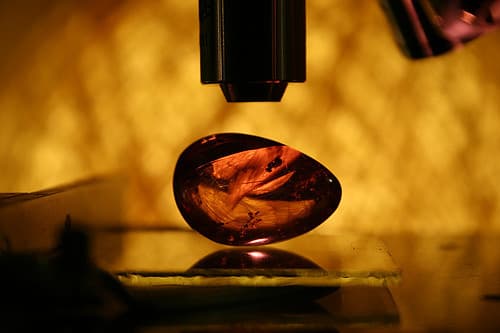The Microscope: A Guide for Gemologists
Sometimes, microscopic inclusions are the only way to distinguish natural from synthetic gems. This makes the microscope an essential lab instrument for gemologists trying to identify gemstones.
13 Minute Read
How Much Magnification do You Need?
You can identify most gems with just 40 power. However, you can’t identify all gems without more magnification. While 80 power has long been considered adequate, new and higher quality synthetics sometimes require even more magnification.
While you only need a 10X loupe for gem grading, a microscope will give you a larger field of view and a brighter image. It will also show alterations like fillings, dye concentrations, assembled stones, and diffusion treatments.
Many gemologists use their microscopes for taking photographs for their appraisals. It’s also a useful sales tool. For example, you can show customers identifying features or why the prongs on a jewelry piece need replacing. In addition, seeing a gem under magnification is impressive. Gemstone photomicrography can produce fantastic images.
Microscope Features
Microscopes can easily cost more than $5,000. Not surprisingly, new gemologists often agonize over how much they should spend. While the better scopes are easier to use, you can make compromises without sacrificing utility. Very good microscopes are available for just a few hundred dollars. Also, understand that your skills are more important…
Donald Clark, CSM IMG
Related Articles
Polariscope Guide, Part 2: Testing for Optic Figure and Sign
Product Review: No Name Refractometers
Gemology Interactive Media Reviews
Recommended Diamond Grading Tools for Novices
Never Stop Learning
When you join the IGS community, you get trusted diamond & gemstone information when you need it.
Get Gemology Insights
Get started with the International Gem Society’s free guide to gemstone identification. Join our weekly newsletter & get a free copy of the Gem ID Checklist!
